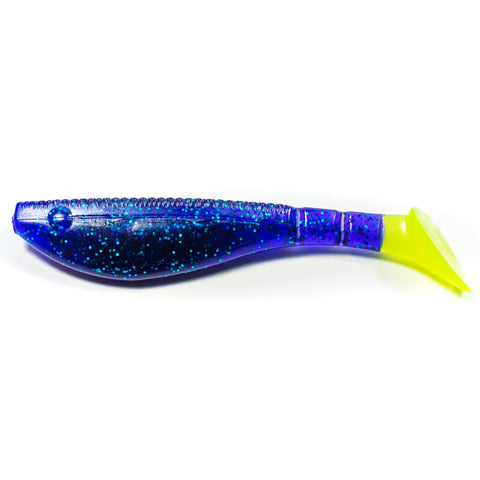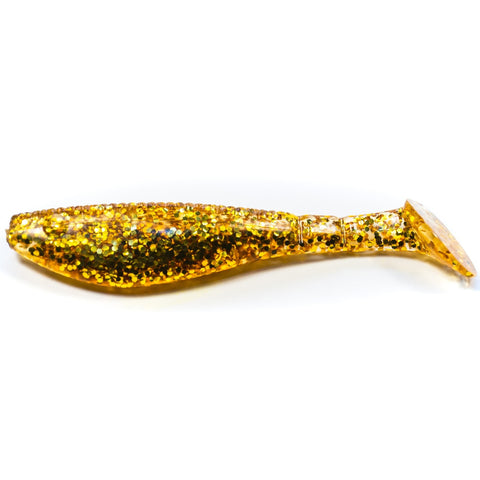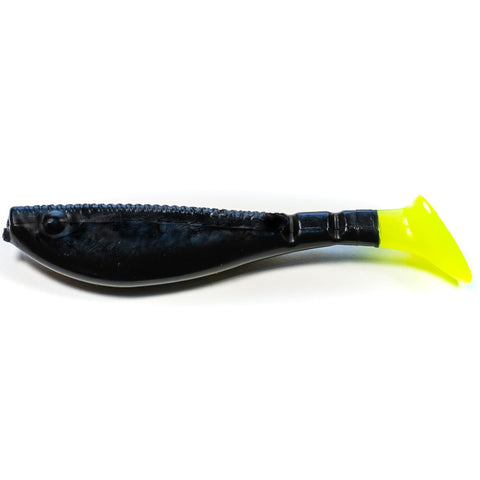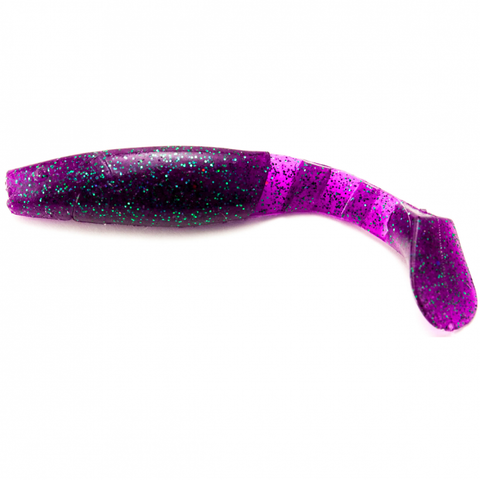
Flex Mullet Design
Let's talk about the design ideas behind the Flex Mullet, and why you could seriously benefit from having it in your tackle box! In this article, we break down design specifics, rigging techniques, and where the Flex Mullet comes into play in your pursuit of fishing excellence.
Technical Design of The Flex Mullet
The Notched Tail Design
The Flex Mullet is the quintessential paddle tail swimbait, and is the perfect integration of flexibility with durability. We’ve designed the Flex Mullet with a notched tail design and reduced the amount of rigid plastic in the tail portion of the lure which purposefully causes instability in the tail. Tail instability really allows the paddle portion of the lure to whip back-and-forth through the water, allowing for greater action and more vibration in the water. A saltwater lure with large amounts of vibration is ideal in drawing a strike in murky or turbid waters. If the fish can’t see it, they need to feel it.
The Deep Belly
The profile of most lures is very thin; however, if you look at most bait fish, they have a deep belly. We designed the Flex Mullet with a deep belly (just like a bait fish) in order to replicate a more natural look in the water. If a red, speck, or flounder sees the Flex Mullet in the water, they'll see the deep-bellied silhouette of a natural bait fish swimming through the water. Our deep belly design doesn't come into play as much in dirty water. That's where our Flex Tail really shines. However, if you're in cleaner water where a fish might be feeding visually, the deep belly design of the Flex Mullet is a game changer!
The Size
At 3.5 inches in length, the Flex Mullet is the perfect mouthful. We wanted the Flex Mullet to be big enough for a fish to see it and feel the vibration from a distance, but small enough so the fish actually strikes the entire lure and not just the tail. Specks are notorious for short striking longer lures. Short strikes are far less common with the body design of the Flex Mullet. Another reason we designed the Flex Mullet to be 3.5 inches long is for optimal hook placement. A 3 aught hook comes out exactly in the middle of the body of the Flex Mullet. Not too far forward or too far back - this increases your hook-up ratio dramatically!
Rigging the Flex Mullet
Weedless
The Flex Mullet can be rigged several different ways. Note: The Flex Mullet is best paired with a size 3 aught hook. We fish a lot of backwater that is often filled with oysters, so our preferred method of rigging the Flex Mullet is weedless. If you're in Texas or Florida and fish a lot of grass flats, we bet you prefer weedless as well. There are several great weedless manufacturers on the market, but our favorite is the Owner Weighted Twistlocks in 3 aught. Our preferred weight is 1/16th or 1/8th. These lighter weights allow the Flex Mullet to stay in the strike zone longer, thus increasing your hook-up. Tip: Twistlocks are much better than standard shank-weighted hooks, because you don't have to push the weight through the body of the lure when rigging. It's a complicated visual to paint in words, but trust us, you'll prefer the Twistlocks.
Standard Jighead (Non-Weedless)
When fishing slightly deeper water or areas that don’t have as much grass (e.g., upper Texas coast, south Louisiana, Alabama, and Mississippi) we’ll throw on a standard jighead, which gives the lure a more weight-forward design. The hydrodynamics of the lure are changed completely by pushing the weight to the front of the lure with a jighead. This weight-forward design really really really makes the paddle tail whip hard, and increases the vibration of the lure! Vibration becomes a very important aspect of drawing the strike when fishing dirty water, as the fish feel the lure more than they see it. We recommend Twistlocks in standard jighead as well, as the screw really helps keep the Flex Mullet up on the jighead. Texas Rattler make a nice rattling jighead. The rattle combined with the vibration of the Flex Tail is a killer combo. We still recommend 1/16th and 1/8th weights to keep the Flex Mullet in the strike zone as long as possible, especially if you're targeting trout - they always seem to strike as the lure is falling.
Wrapping Things Up
The 3.5" design with the Flex Tail and deep belly is something that is unique to the Flex Mullet, and should be in your tackle box when targeting inshore species like reds, specks, flounder, and snook. Want to catch reds in 10 inches of water? Rig the Flex Mullet weedless, work it close to the surface, and get ready for a mud flinging fight! Are you targeting trout in a couple feet of water? Rig the Flex Mullet with a standard jighead and jig it off the bottom. Be ready for the strike to come as the lure is falling.
Every lure has its place in a well-rounded inshore tackle box, but if you're looking to pick up a finesse lure that still has tons of action and can draw huge strikes, look no further than the Flex Mullet!




